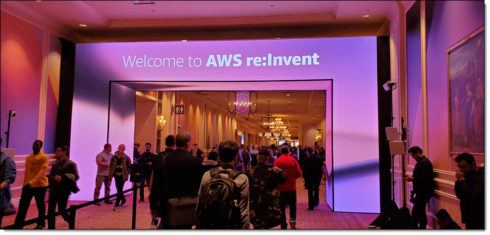
Amazon continues to announce new products and features at its annual AWS re:Invent conference. Here are a few things you might have missed:
Amazon CodeGuru now available
Amazon launched CodeGuru, which provides code reviews and application performance recommendations. The solution helps finds computationally expensive pieces of code and provides recommendations on how to fix or improve them.
CodeGuru was trained on millions of code reviews, code from thousands of Amazon projects, and code from the top 10,000 open source project. Using this knowledge, it can identify resources leaks, data race conditions between concurrent threads, and wasted CPU cycles.
RELATED CONTENT:
AWS re:Invent: Quantum computing, end-of-support migration program for Windows Server, and Amazon SageMaker Operators for Kubernetes
AWS re:Invent: Matillion Data Loader, Node.js functions for AWS Lambda, and new AWS support
Amazon SageMaker Studio now available
In addition to the several Amazon SageMaker features announced yesterday, Amazon announced SageMaker Studio, which is an IDE for machine learning. According to Amazon, SageMaker has come a long way since its launch in 2017, but the machine learning development workflow is still fairly iterative and challenging for developers to manage due to tool immaturity.
Amazon SageMaker Studio unifies the tools that are needed for machine learning development. With this IDE, developers will be able to write code, track experiments, visualize data, and perform debugging and monitoring from a single interface.
Amazon announces new analytics capabilities
Amazon has announced new analytics capabilities to help users manage data at scale. New Amazon Redshift capabilities provide better query performance and offer greater flexibility for customers working across data storage, data warehouse, and operational databases.
A few key new Amazon Redshift include RA3 instances with Managed Storage, Advanced Query Accelerator, Data Lake Export, and Federated Query.
In addition, AWS announced a new storage tier for Amazon Elasticsearch Service called UltraWarm. UltraWarm stores large volumes of data more cost-effectively and provides the quick and interactive experience that Elasticsearch customers expect.
Amazon now offers Managed Apache Cassandra
Amazon also announced a managed version of Apache Cassandra. With Managed Cassandra, developers will still be able to use the same Cassandra code, Apache 2.0 drivers, and tools, but won’t have to worry about managing the underlying infrastructure. In addition, because it is serverless, there is no need to provision, configure, or operate large clusters; manually add or remove nodes, or rebalance partitions as traffic scales.
“Customers who are running Cassandra have told us they want to spend less time scaling, patching, and managing infrastructure and more time building applications at scale,” said Shawn Bice, vice president of databases at AWS. “Amazon Managed Cassandra Service gives these customers the ability to run Cassandra without having to worry about managing the underlying hardware, and it gives them an easy way to integrate their Cassandra applications with other AWS services. Because Amazon Managed Cassandra Service is also serverless customers can stand up Cassandra clusters in minutes and scale their database up and down based on demand, so they can spend less time worrying about their clusters, and more time building the applications that impact their businesses.”






